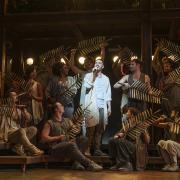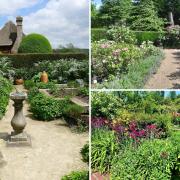Mike Russell of Sussex Wildlife Trust reflects on a recent trip abroad
I’ve just returned from leading a bird watching trip to Lesvos. Yes, I know it’s a hard life but someone has to do it. I was completely blown away by this magical island: its birds, its flowers, its landscape and its people. For those of you whose geography is a little rusty, Lesvos is a small Greek island in the eastern Mediterranean, about six miles off the coast of Turkey.
During spring it is a hotspot for millions of birds migrating from Africa and where there are birds, there are bird watchers. On our flight to the island I noticed that the plane was full of people that looked just like me! Lesvos is a spring destination for hundreds of birders from all over northern Europe, providing the island with an early start to their tourist season and bringing a significant bonus to their economy. The islanders viewed us with mild bemusement, but undoubtedly realised that their beautiful island has something that large numbers of people want to see.
We spent a glorious week watching many species that we never get to see in the UK. What was striking was the sheer number of birds that do visit and breed in Britain, seen in Lesvos in such profusion. There were times we stared open-mouthed at the breathtaking swathes of wild flowers and meadows, the variety of orchids and finding plants such as cornflower and corncockle just everywhere.
So, what has all this got to do with Sussex? I may be viewing this through a nostalgic haze but Lesvos looks like Sussex may have done a century ago. Yes, geography, geology and climate are different but we share many similar species. While we were there, nightingales sang from every other bush, newly-arrived turtle doves purred from telegraph wires, hundreds of swifts, swallows and house martins filled the skies overhead. All these birds are now in sharp decline in the UK, particularly in the south east.
A couple of people on the trip are taking part in a survey to monitor corn bunting populations on the South Downs, as the population of this species has declined drastically in the past 50 years. In Lesvos, their song, which sounds like jangling keys, accompanied us everywhere across the island. Unimproved hay meadows have virtually disappeared in Sussex and much of the UK, so our chance of finding wild cornflower, corncockle and other traditional meadow plants has all but vanished.
For a small island, there are many protected areas and heritage sites covering over 90,000 hectares. The soils and geology make intensive agriculture difficult but olive groves dominate the landscape. These can be very good for wildlife so the whole island provides a range of suitable habitats for a great variety of species, plus a safe staging post for those teeming migrants that are making their way further north into Europe.
Some might say that comparison of Sussex with an island in the Mediterranean is meaningless, but I’m sure our grandparents and great grandparents would have shared similar experiences at home to those I enjoyed in Lesvos – a rich mosaic of sight, sound and smell that today in Sussex sadly evades our senses.
Sussex Wildlife Trust, Woods Mill, Henfield, West Sussex, BN5 9SD, 01273 492630; www.sussexwildlifetrust.org.ukWildCall (wildlife information service); 01273 494777


























